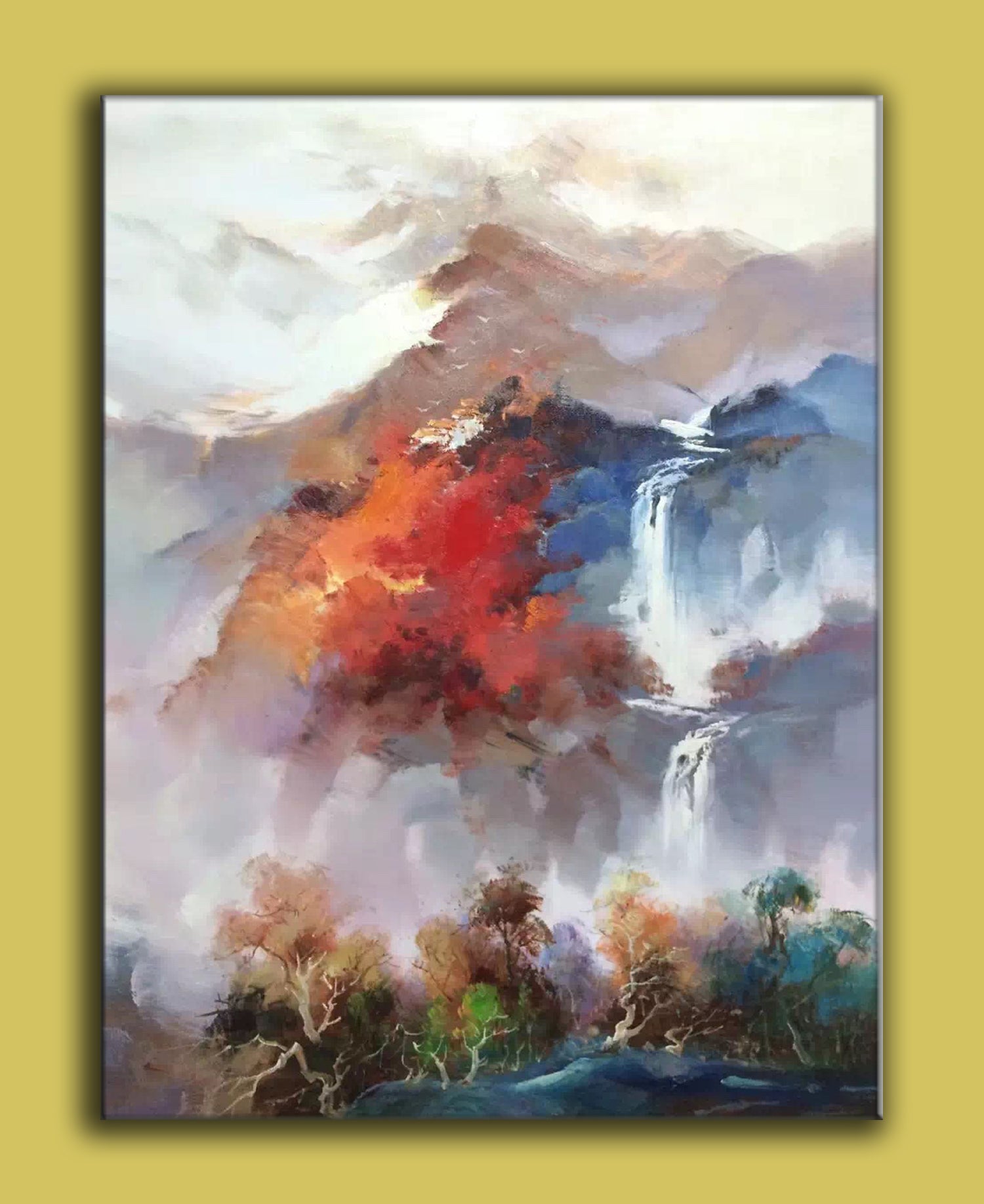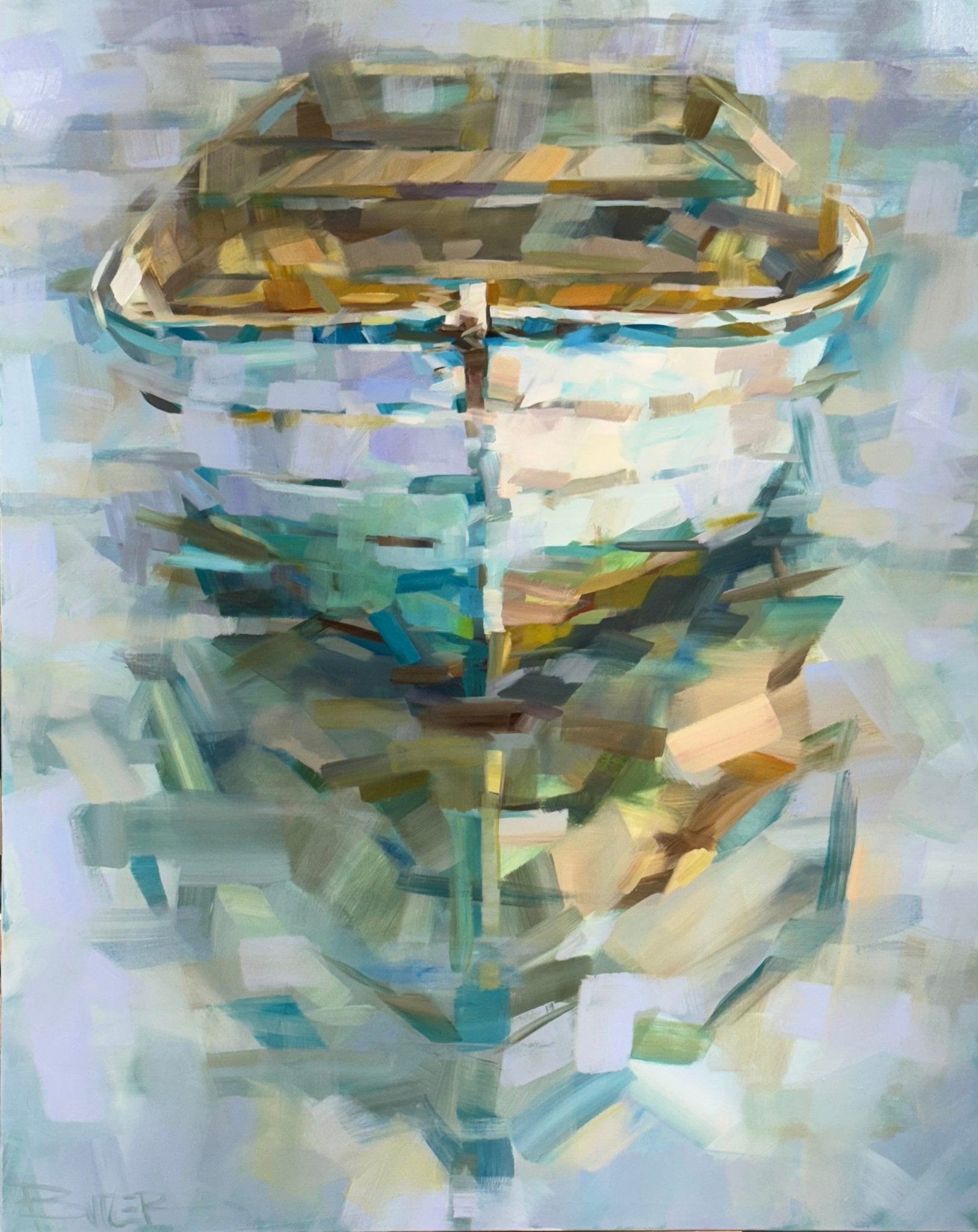Exploring All About Oil Paints: An Overview to Recognizing Their Appeal and Value
Oil paintings have mesmerized audiences for centuries, offering a glimpse right into the artistic mastery of numerous periods. Their abundant history is intertwined with cutting-edge strategies and extensive emotional expression. Comprehending the products and techniques behind these artworks can improve admiration. In addition, the market for oil paintings presents opportunities for enthusiasts and capitalists alike. As one discovers this fascinating globe, the concern occurs: what makes an oil painting really valuable?
The Background of Oil Painting: A Trip With Time
Oil painting has roots that date back to old times, it really prospered during the Renaissance, when musicians discovered its convenience and rich shade potential. Early instances can be mapped to the 7th century, with strategies evolving especially across cultures. The medium came to be popular in Northern Europe in the 15th century, especially with the works of musicians like Jan van Eyck, who pioneered its usage for detailed realism and vibrant colors. This duration marked a separation from tempera paints, permitting higher deepness and appearance. As oil painting spread, it influenced plenty of artists, resulting in work of arts by distinguished numbers such as Leonardo da Vinci and Rembrandt. The medium's heritage continues, forming the art globe well right into modern times.
Comprehending Oil Repaints: Products and Techniques
As musicians explore the world of oil paints, they come across a varied range of materials and methods that specify this tool. The key components of oil paint include pigments, which offer color, and drying out oils, such as linseed, that bind the pigments and assist in application. Numerous ingredients can modify the paint's texture and drying time, improving versatility. Techniques like glazing, where transparent layers are developed, and impasto, which includes using thick paint, permit for various aesthetic results. In addition, the usage of brushes, scheme knives, and also fingers can produce special appearances and coatings. Recognizing these methods and materials makes it possible for musicians to totally share their creative thinking and attain the wanted influence in their art work.
The Function of Color in Oil Paintings
Shade plays a crucial function in oil paintings, affecting both aesthetic appeal and psychological vibration. Comprehending shade theory basics, including the relationships in between colors, can enhance a musician's capability to convey mood and atmosphere. In addition, mastering color mixing strategies enables greater deepness and richness in a painting's scheme.

Shade Concept Fundamentals
Comprehending color theory is important for musicians dealing with oil paints, as it forms the structure for producing harmonious and visually interesting compositions. Shade concept includes the study of how shades engage, the shade wheel, and the relationships between key, additional, and tertiary colors. Musicians utilize complementary colors to boost contrasts and develop focal points, while analogous shades advertise unity and cohesiveness within a piece. Additionally, the principles of amazing and warm shades influence the perception of deepness and space in a painting. Grasping these concepts permits artists to adjust color properly, directing the visitor's eye and communicating their designated message. Proficiency of color concept inevitably enriches an artist's capacity to convey emotions and concepts through their job.
Psychological Impact of Color
The emotional influence of shade in oil paintings plays a critical role in exactly how visitors attach and perceive with artwork. Shades evoke certain sensations and state of minds, influencing the audience's psychological state. Warm colors like oranges and reds can create a sense of warmth and power, while cool tones such as blues and eco-friendlies usually evoke calmness or self-questioning. Artists purposefully pick color palettes to improve narrative aspects, leading the audience's emotional journey. The saturation and contrast of shades better intensify these effects, drawing attention and producing emphasis. Ultimately, the interaction of shades in oil paintings not just boosts their aesthetic allure but also serves as a powerful medium for psychological expression, improving the visitor's experience and analysis.
Shade Mixing Techniques
While numerous aspects of oil paint add to the general structure, mastering shade blending techniques is necessary for accomplishing preferred impacts and deepness. Shade mixing can be come close to with various methods, consisting of the additive and subtractive processes. Additive mixing involves incorporating shades of light, while subtractive blending depends on pigments, where shades mix to produce brand-new shades. Musicians commonly make use of a restricted scheme to create unified works, understanding the partnerships between key, additional, and tertiary shades. Methods such as glazing and scumbling further boost depth and luminance. By masterfully mixing shades, an artist can stimulate emotions, produce centerpieces, and accomplish a feeling of realism, inevitably elevating the paint's psychological and visual effect.
Famous Oil Painters and Their Iconic Functions

Renowned for their proficiency of color and technique, oil painters have produced a few of the most renowned art work in background. Prominent musicians like Vincent van Gogh astounded target markets with his stirring brushwork in "Starry Evening," while Claude Monet's "Impression, Dawn" prepared for Impressionism. Leonardo da Vinci's "Mona Lisa" stays an enduring sign of creative brilliant, showcasing his ability in recording human expression. Rembrandt's "The Night Watch" illustrates his cutting-edge usage of light and darkness. Other notable numbers include Pablo Picasso, that transformed modern art with his strong trial and error in works like "Les Demoiselles d'Avignon," and Georgia O'Keeffe, whose dynamic representations of landscapes and flowers helped define American innovation. Each musician's special style contributed significantly to the oil painting landscape.
How to Evaluate the Top Quality of an Oil Paint
Reviewing the high quality of an oil paint includes a cautious assessment of craftsmanship strategies, along with an evaluation of color and composition. Observing brushwork, layering, and the application of paint can disclose the artist's ability degree. Additionally, the interaction of colors and the overall setup of aspects contribute substantially to the painting's aesthetic worth.
Evaluating Workmanship Methods
A precise evaluation of workmanship strategies is crucial for establishing the high quality of an oil painting. Evaluators ought to initially analyze the application of paint; thick, distinctive brushstrokes may recommend a knowledgeable hand, while extremely uniform applications might show an absence of deepness. oil paintings for sale. The layering strategy is additionally crucial; the presence of glazes and differed thickness can improve luminance and complexity. In addition, the quality of the products utilized, such as the canvas and pigments, plays a significant function in toughness and overall visual. Attention to information in aspects like sides and shifts between shades mirrors the artist's commitment to their craft. Inevitably, these techniques contribute to the painting's psychological influence and market price, serving as indications of the musician's skill and intent
Examining Shade and Make-up
While assessing the high quality of an oil paint, one must concentrate on the interaction of color and composition, as these aspects are essential to the art work's total influence. Color choices can evoke emotions and develop mood; therefore, the artist's scheme should be taken a look at for harmony and contrast. A healthy make-up directs the customer's eye and creates a sense of unity. Musicians often utilize strategies like the guideline of thirds or leading lines to improve aesthetic passion. Additionally, the usage of light and darkness can add depth, boosting the three-dimensionality of the paint. Inevitably, a successful oil painting weds shade and structure, engaging the customer and welcoming a much deeper admiration of the musician's vision and technique.
Taking care of and Preserving Oil Paintings
Appropriate treatment and preservation of oil paintings is vital for preserving their integrity and durability. To safeguard these art work, it is vital to display them far from straight sunlight, which can cause fading and staining. Preserving a stable environment with regulated temperature level and humidity further help in protecting against damages. Cleansing need to be done delicately making use of a soft, completely dry towel, preventing any severe chemicals that can hurt the paint or varnish. Regular examinations for indications of wear and tear, such as flaking or cracking, are advisable. When storing or moving oil paintings, proper cushioning and framing are needed to avoid physical damage. Inevitably, thorough treatment adds to the aesthetic appeal and worth of oil paintings gradually.
The Market for Oil Paints: Collecting and Investing
Recognizing the market characteristics for oil paints is vital for capitalists and collection agencies alike. The value of these artworks is affected by numerous elements, consisting of the artist's online reputation, historical value, and present fads. Collection agencies frequently seek items that reverberate personally while thinking about possible appreciation in value. Auctions and galleries work as key venues for trading, with rates fluctuating based on demand and rarity. Buying oil paintings needs research study right into the marketplace, along with an understanding of authenticity and provenance. Additionally, emerging artists might offer opportunities for significant returns, while established names can command high costs. Overall, a strategic method to accumulating can yield both aesthetic pleasure and financial incentives.

Regularly Asked Inquiries
What Are the Ecological Influences of Oil Painting Products?
The ecological impacts of oil paint products include the release of unpredictable natural compounds (VOCs), damaging waste generation, and source removal for pigments. These elements add to air pollution and environmental destruction, raising concerns amongst environmentally mindful artists and customers.
How Do Various Canvases Affect Oil Painting Outcomes?
Different canvases affect oil paint results significantly. Surface area, absorbency, and structure quality can alter paint application, drying times, and color vibrancy. Musicians usually choose certain canvases to attain wanted results and boost their creative expression.
Can Oil Paintings Be Brought Back if Damaged?
Oil paintings can indeed be restored if harmed. Expert conservators make use of different methods to fix rips, tidy surfaces, and address discoloration, ensuring that the art work maintains its original charm and worth oil paintings for sale for future generations.
What Are the Indications of an Original Oil Paint?
The indicators of an initial oil painting consist of noticeable brush strokes, texture variants, and an unequal canvas weave (oil paintings for sale). Furthermore, credibility might be confirmed with provenance, signatures, and the visibility of a varnish layer distinct to oil tools
Exactly How Has Technology Influenced Modern Oil Paint Techniques?
Innovation has actually substantially influenced modern-day oil painting techniques by presenting digital devices for planning, boosted materials for texture and longevity, and online systems for sharing and offering art, therefore broadening musicians' creative opportunities and audience reach. Oil paint has roots that date back to ancient times, it genuinely thrived during the Renaissance, when artists uncovered its adaptability and abundant shade capacity. The psychological influence of color in oil paints plays an important duty in how customers regard and attach with art work. While lots of elements of oil paint contribute to the overall structure, understanding shade blending techniques is necessary for attaining desired effects and depth. Reviewing the quality of an oil painting includes a mindful analysis of workmanship techniques, as well as an analysis of color and composition. While examining the quality of an oil paint, one should focus on the interplay of color and composition, as these aspects are essential to the art work's general influence.